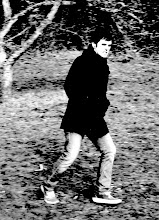{Personas}
help to identify target audience so that designers have a real person/character to think about while designing because often designers create scenarios based on themselves
or people they know
alan cooper gave his personas goals which helped in building scenarios.
this method of creating personas for research is an extension of the older method of creating user archetypes.
cooper's original method only initial investigation and downplayed ongoing data collection.
{4 common problems with creating personas}
1. characters are not believable; obviously created by committee or not based on real data.
2. characters not communicated well. often main method was resume-like document blown up into a poster and posted in hallways.
3. no real understanding about how to use the characters. nothing spoke to all disciplines or all stages of development cycle.
4. projects were often grassroots efforts with little or no high-level support (budget, staff, etc.)
{Implementation}
This process, while very useful, can get complicated
it is best to keep the number of characters down to around four. this way you can cover a large target market without excluding important groups while maintaining a manageable and effective campaign.
There now exist personas, anti-personas (personas being specifically not designed for), disabled personas and international personas.
Large scale and previously carried out studies are generally used.
it would be far too expensive and time consuming to do all new research when valuable data is readily available.
Photo sessions are held so that many different and "real" photos can be taken of the person to represent the persona.
stock photos are too slick and only offer one or two photos.
personas help assumptions about target audiences become more explicit.
massive generalizations are narrowed down so that we aren't just guessing what the target markets want.
Using the right personas is very important. The wrong personas can create a complete disconnect between the target audience and the designs. Overuse of personas can also lead to the audience thinking that the designers do not recognize real individuals. The use of personas should not replace user-centered research methods.
{Apologies for the lack of images. The reading didn't inspire me too look for generalized images of oversimplified groups of people + i'm tired}
help to identify target audience so that designers have a real person/character to think about while designing because often designers create scenarios based on themselves
or people they know
alan cooper gave his personas goals which helped in building scenarios.
this method of creating personas for research is an extension of the older method of creating user archetypes.
cooper's original method only initial investigation and downplayed ongoing data collection.
{4 common problems with creating personas}
1. characters are not believable; obviously created by committee or not based on real data.
2. characters not communicated well. often main method was resume-like document blown up into a poster and posted in hallways.
3. no real understanding about how to use the characters. nothing spoke to all disciplines or all stages of development cycle.
4. projects were often grassroots efforts with little or no high-level support (budget, staff, etc.)
{Implementation}
This process, while very useful, can get complicated
it is best to keep the number of characters down to around four. this way you can cover a large target market without excluding important groups while maintaining a manageable and effective campaign.
There now exist personas, anti-personas (personas being specifically not designed for), disabled personas and international personas.
Large scale and previously carried out studies are generally used.
it would be far too expensive and time consuming to do all new research when valuable data is readily available.
Photo sessions are held so that many different and "real" photos can be taken of the person to represent the persona.
stock photos are too slick and only offer one or two photos.
personas help assumptions about target audiences become more explicit.
massive generalizations are narrowed down so that we aren't just guessing what the target markets want.
Using the right personas is very important. The wrong personas can create a complete disconnect between the target audience and the designs. Overuse of personas can also lead to the audience thinking that the designers do not recognize real individuals. The use of personas should not replace user-centered research methods.
{Apologies for the lack of images. The reading didn't inspire me too look for generalized images of oversimplified groups of people + i'm tired}

No comments:
Post a Comment